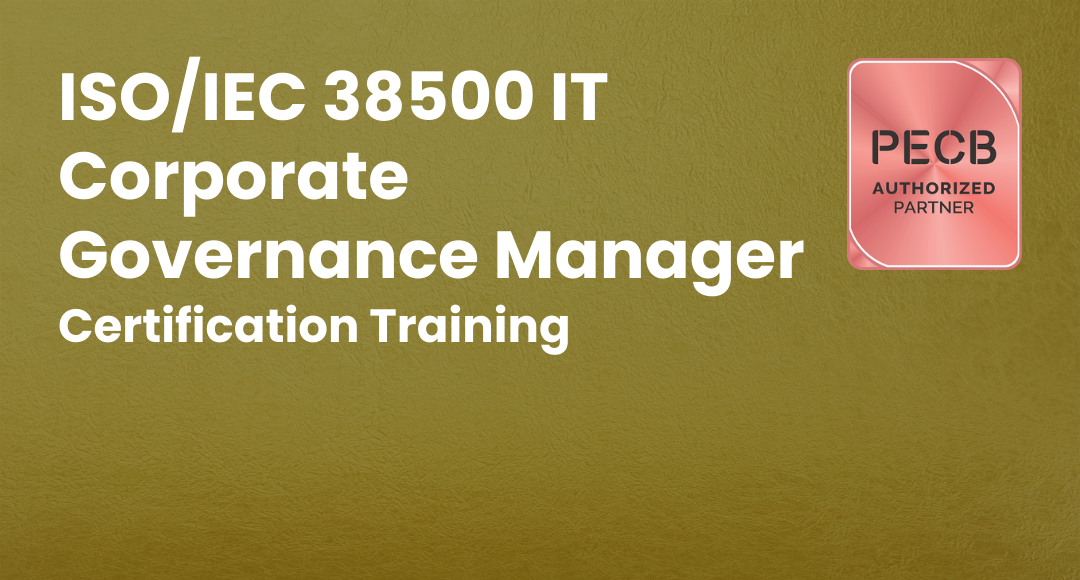The Role of Technology in Scaling a Small Business
-
 By Sprintzeal
By Sprintzeal - Published on Feb 19 2025

Due to the increased demands, niches in the industries are getting oversaturated day by day. Big players have started blazing their guns more often, increasing the competition in the space.
Traditionally, amid such chaos, small businesses were often neglected because they couldn’t compete with the huge quantities and eloquent supply chains that big companies could establish.
However, since technology got advanced, SMEs were able to catch up with the competition and give big businesses a run at the mill.
The introduction of AI tools further streamlined workflows, allowing small businesses to complete more work in less time. Today, the sky is the limit for such companies as they can parallel other businesses with much less workforce and resources due to technology.
In this post, we will deeply discuss the role of technology in scaling small businesses. So, keep reading till the end to discover all the secrets about today’s topic.
Ways Technology Elevates Small Businesses to the Next Level
Below are some ways technology has helped elevate and scale small businesses in recent years.
Table of Contents
1. Automating Repetitive Tasks
Remember the time when everything was, quite literally, hands-on. There isn’t necessarily anything wrong with that approach. However, manual work is prone to error more often than not.
Sure, machines also commit errors, so we have human vigilance operators. But robots don’t get tired like us. They can work longer shifts running on the same algorithm, one iteration after the other.
That is why technology is more suited to handle repetitive tasks like data entry, digitization of documents, etc.
For instance, using an OCR-based image text extractor enables businesses and teams to instantly transform scanned invoices or receipts into editable digital files. This eliminates the need for manual retyping, ensuring data is captured effortlessly and without mistakes.
OCR (Optical Character Recognition) technology has revolutionized this regard, allowing small businesses to finish their mundane tasks quickly and efficiently while being far more accurate than a human can ever be.
Automating repetitive tasks also allows humans to indulge in more creative/brain-draining activities like strategy-making, doing business deals, handling legal matters, etc., some aspects that robots cannot handle that well.
2. Market Expansion
What are websites? Let me rephrase that question: what is the internet, in general? A form of technology that we use daily without giving it the credit it deserves.
Today, on the internet, there are e-commerce platforms and online stores like Shopify, etc., that add convenience to users who can buy from wherever, whenever they want.
This means that small businesses can enter markets virtually that they never couldn’t otherwise. The reason? The physical market expansion would mean rental, labor, and other unwanted overheads that can overload small businesses before opening.
Hence, the role of technology in elevating small businesses is significant, allowing them to make giant leaps in untapped territories without hesitation. To maximize these opportunities, many businesses choose to hire Shopify Plus experts to optimize their online stores and scale efficiently.
3. Personalization of Content
Continuing our discussion above, when you have access to the internet, you can also get your hands on data – a crucial element to success in the 21st century.
Tools like IP Location can ensure you know where each customer arrives at your platforms. Knowing a user's location can allow you to personalize content to them according to their language and preferences.
Furthermore, knowing a customer’s origin can mean you can show them marketing material according to local trends and frenzies. This can allow businesses to connect with the user more efficiently, boosting sales through the roof.
4. Scalable Infrastructure
Okay, the internet is cool, but how can small businesses manage their online platforms when scaling to compete on a regional/global level?
The answer is, again, technology. Cloud computing and SaaS solutions are the biggest aid for small businesses. Workers can store data securely, access files from anywhere, and collaborate efficiently using online platforms.
Online solutions like AWS and Google Cloud offer flexible IT infrastructure, supporting increased data storage and traffic without upfront capital investment. This is an ideal situation for small businesses that can go from grassroots level to global leaders in no time without investing too many resources in the start.
Adding to that premise, when your platforms grow globally, other technological tools like Google Insights can help you know what’s working in your favor and what areas of improvement you are looking for. So, how technology assists small businesses in growing is practically endless.
5. Enhanced Customer Experience
What are big companies most known for? Their extremely premium customer experience. What if technology can do the same for your small businesses without too much hassle or money? Quite fascinating.
Today, we have many AI chat support tools like LiveChat that can work relentlessly to satisfy your customers around the clock. This enhances customer experience, propelling them to become recurrent users of your brand.
Moreover, mobile apps and delivery tracking systems like ShipStation improve customer engagement by keeping users in a consistent loop of updates. Such transaction clarity further improves brand loyalty, allowing small businesses to scale exponentially.
6. Cybersecurity and Risk Management
While payment technologies like Square or Strip can streamline transactions to add to customer convenience, this very aspect also opens up new avenues of hacks called cybercrimes.
But worry not because technology is once again here to the rescue!
SMEs can use tools like LastPass to safeguard their digital assets. On top of that, the MFA (Multi-Factor Authentication) processes can further elevate the security of user accounts, discouraging money fraud and other related activities from taking place.
This can make your platforms more secure and trusted by users, allowing you to take the lead over competitors.
Furthermore, companies on a smaller scale can regulate, manage, and negotiate cyber threats by utilizing firewalls and cybersecurity solutions like McAfee and Norton, all thanks to technology.
In a nutshell, technology arrived as a savior for small businesses but also brought unforeseen issues. These problems were once again solved by incorporating technological tools in workflows, hence, a complete circle.
Final Words
Technology enables small businesses to compete effectively in an increasingly saturated market. With advancements in repetitive tasks, business owners can expand their market online, increasing their customer outreach significantly.
Furthermore, technology allows personalizing content, allowing your words to resonate with the audience. Smart chatbots and tools can also enhance customer experiences, enabling small businesses to operate flexibly and efficiently.
By leveraging such technological tools, small businesses can innovate, improve productivity, and ultimately scale their operations successfully.
That will be all for today! We hope you enjoyed reading our content and gained some valuable insights.
Subscribe to our Newsletters
Popular Programs
ISO/IEC 38500 IT Corporate Governance Manager
Live Virtual Training
- 4.9 (650 + Ratings)
- 43k + Learners
ISO/IEC 38500 Lead IT Corporate Governance Manager
Live Virtual Training
- 4.2 (650 + Ratings)
- 59k + Learners
Trending Posts
What is Digital Business? An Introduction
Last updated on Jan 18 2023
Affordable Asset Management Software for Small Teams
Last updated on Aug 15 2025
Business Loan Comparison Calculator: How to Pick the Right Financing in Minutes
Last updated on Dec 22 2025
How to Write an Executive Summary for a Business Plan?
Last updated on Feb 13 2025
Career Opportunities After a Distance MBA in India
Last updated on Mar 31 2025
What is Business Analysis - A Complete Guide
Last updated on May 24 2024
Categories
- Other 69
- Agile Management 45
- Cloud Computing 56
- Project Management 171
- Big Data 66
- Business Management 87
- Digital Marketing 76
- IT Service Management 29
- Programming Language 58
- AI and Machine Learning 74
- IT Security 111
- Quality Management 78
- IT Hardware and Networking 25
- Microsoft Program 4
- Workplace Skill Building 13
- Risk Management 9
- Information Security 8
- Leadership and Management 7
- Corporate Training and Development 1
Trending Now
Process Maps - How to Create and Use Them
ebook11 Best Business Blogs 2026 (UPDATED)
ebookCBAP Certification Exam Preparation Guide 2026
ebookBusiness analyst career path in 2026
ebookCCBA Certification Career Transformation Guide
ebookUpdated Business Analyst Interview Questions and Answers 2026
ebookTop Salesforce Interview Questions and Answers 2026
ebookWhat Is Business Continuity Planning?
ebookBusiness Analysis Certifications 2026
ebookBusiness Process Mapping Guide for Beginners
ebookBusiness Analyst Skills List 2026
ebookWhat is Business Analysis - A Complete Guide
ebookRemote Working Methods for 2026
ebookBest Business Analytics Tools in 2026
ebookWhat is Salesforce? A Beginner's Guide
ebookWhat is Digital Business? An Introduction
ebookBusiness Analyst Job Requirements - Qualifications and Skills
ebookBusiness Analyst Job Profile – Role, Skills and Challenges
ebookTypes of Business Analyst Roles in 2026 – Responsibilities and Earnings
ebookBusiness Analyst Qualifications and Skills in 2026
ebookBusiness Analyst Career Road Map Explained
ebookHow to Become a Business Analyst: Step-by-Step Guide
ArticleBusiness Analyst Job Description - Key Role and Responsibilities
ebookBusiness Analyst Career Guide 2026
ebookWhy Become a Business Analyst in 2026: Top Reasons and Scope
ArticleFundamentals of Business Impact Analysis (BIA): Best Practices to Implement
ArticleBenefits of ISO 26000 for Strengthening Business Continuity
ebookThe Essential Guide to ISO Standards in Business Management
ArticlePrinciples of ISO 14001 Foundation
ArticleUnderstanding ISO/IEC 38500 IT Foundation and its application
ArticleTop Professional Business Certifications Trending in 2026
ArticleSteps to Implementing ISO 22301 Foundation: A Complete Guide
ebookUnderstanding ISO 37101 Foundation and Its Role in Sustainable Development
Article7 Core Principles of ISO 26000: A Guide to Ethical Organizational Practices
ebookThe Reason For The Fall Of BlackBerry
ArticleGoogle and Innovation: What Makes it Most Innovative?
ArticleBest Business Analysis Books You Need to Read in 2026
ArticleWhat is MBA in HR: Overview, Scope and Benefits
ArticleHow to Become a Product Manager: A Step-by-Step Guide
ArticleWhy Reliance Industries is a Global Giant?
ArticleTata Growth and Global Success: Best Lessons and Their Impact
ArticleMost Sold Ford Car: Global Rankings and Success Insights
ArticleHow Disney's Success Story Became a Global Entertainment Powerhouse?
Article4 Proven Approches to Build a Strong LinkedIn Community
ArticleHow to Write an Executive Summary for a Business Plan?
ArticleEssential Business Tools Every Female Founder Should Have
ArticleMastering Student Finances with AI: The Ultimate Guide for Comfortable Living
ArticleBusiness Automation: Reshaping Modern Enterprises
ArticleThe ROI of Automated Invoice Processing: What Can Your Company Save?
ArticleCareer Opportunities After a Distance MBA in India
ArticleModeling Business Processes in Law Firms: Optimization Through Modern Technologies
ArticleBoosting E-Learning Visibility with SEO and Video Translation Strategies
ArticleBuild a Store That Sells: E-commerce Essentials Explained
ArticleMaximizing E-Commerce Efficiency: Top Plugins Every Online Store Needs
ArticleMastering Digital Communication: Tools That Redefine Transparency in Teams
ArticleWhat Is HubSpot CRM & Why Should You Choose It For Your Business?
ArticleHow Does Personalization Impact Cold Email Success?
ArticleThe 5 Best Lead Finder Tools for Brand Collaborations
ArticleThe Complete Guide to Bootstrapping Your SaaS
ArticleHow to Build a One-Person Business Like a Team of Ten? Bloggervoice
ArticleMaximize ROI: Why Quality Video Animation Services Matter
Article6 Digital Tools Every Solo Founder Should Be Using by Now
ArticleHandle Sales, Tax, and Inventory Seamlessly with Billing Software for PC
ArticleTax Saving Options for Working Individuals in 2026
ArticleHow to Use AI Video Generators and Online Video Translators to Grow an International Audience
ArticleBest Accounting Software For Etsy Bookkeeping
ArticleOutsourcing: Everything You Need to Know
ArticleIn-House vs. Outsourced AI Development: Finding the Right Balance
ArticleAffordable Asset Management Software for Small Teams
ArticleFrom Delays to Instant Approvals: The Power of Real-Time Insurance in Labs
Article3 Best Video Meeting Tools to Simplify Remote Work and Hybrid Teams
Article5 Top Accounting Software Options for Construction Firms
Article5 Best Debt Collection Tools for Faster Payments and Scalable Growth
ArticleWhy Manufacturers Should Invest in Both Machines and People
ArticleMBA Interview Questions and Answers Guide 2026
ArticleTop 7 Tools for WhatsApp And HubSpot Integration in 2026
ArticleThe Future of Networking and CRM: Building Stronger Business Connections
ArticleThe Best 3D Architectural Rendering Companies
ArticleMastering Your Sales Funnel to Maximize Every Conversion
ArticleMastering the Art of Interpersonal Communication
ArticleITAM and Finance: Depreciation, GL Mapping, and Audit-Ready Records
Article8 Best Cost-Effective ISO 27001 Compliance Solutions for 2026
ArticleWhy Your Business Really Needs a Shopify Consultation
ArticleTurning workforce data into actionable insights
ArticleSteps to Become an Investment Banker—Skills & Career Guide
ArticleBusiness Loan Comparison Calculator: How to Pick the Right Financing in Minutes
Article
















